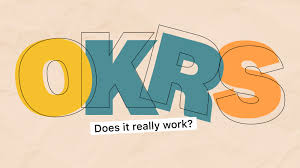A few years ago, I worked with a team that was busy all the time but somehow never seemed to move the needle. We had meetings, spreadsheets, and dashboards — but no one could clearly say what “success” actually looked like. Everyone was rowing hard, but not necessarily in the same direction.
Then someone suggested we try OKRs — Objectives and Key Results. At first, it felt like another management fad. But within a few months, we realized something: when done right, OKRs actually change how a team thinks, communicates, and executes.
If you’ve been hearing about OKRs and wondering if they’re worth the effort, the short answer is yes — but only if you commit to the process (and ideally, use good OKR software to keep it organized).
What OKRs Actually Do
Here’s the simplest way to think about OKRs:
- Objectives are what you want to achieve. They should be ambitious, inspiring, and easy to remember.
- Key Results are how you’ll know you’re getting there. They’re measurable, specific, and time-bound.
It’s not rocket science, but it is powerful.
For example:
Objective: Become the go-to brand for small business accounting.
Key Results:
- Hit 10,000 active monthly users.
- Reduce churn to under 3%.
- Launch a new referral program by Q3.
Suddenly, your team isn’t just “working hard” — they’re working intentionally. Every project, every decision, every metric connects to a bigger purpose.
Why OKRs Work So Well
The reason OKRs have become such a staple at companies like Google, LinkedIn, and Spotify is that they solve three big problems that plague most teams:
- Lack of clarity: Everyone knows what the priorities are — and what they aren’t.
- Misalignment: OKRs connect individual goals to company goals, so everyone rows in the same direction.
- Accountability: Progress is measurable. You can’t hide behind vague language or gut feelings.
And perhaps most importantly, OKRs help teams think bigger. The framework encourages stretch goals — the kind that push you slightly past your comfort zone. Even if you only reach 80%, you’ve usually gone further than you would have with a “safe” target.
Where OKRs Start to Fall Apart
Here’s the catch: setting OKRs is easy; keeping track of them is not.
Most teams start out using spreadsheets or slides. It works fine for a while — until you’ve got multiple teams, departments, and quarters to manage. Then it turns into chaos. Spreadsheets don’t update automatically, people forget to check in, and before you know it, the OKRs that were supposed to guide your quarter are buried in a forgotten Google Drive folder.
That’s usually the moment someone says, “We should probably look into OKR software.”
How OKR Software Makes the Difference
Good OKR software isn’t just a fancy to-do list. It’s a system that brings clarity, visibility, and accountability into how your organization sets and tracks goals.
Here’s what the right tool can do for you:
- Everything in One Place
Instead of juggling spreadsheets, shared docs, and random dashboards, OKR software gives you a central hub. Everyone can see the company goals, their own OKRs, and how progress is being measured.
- Real-Time Updates
Many OKR tools integrate with systems like Jira, Asana, and Slack. That means when work moves forward, your key results update automatically. No more manual status reports or forgotten metrics.
- Transparency
OKR software makes progress visible across the company. It’s not about micromanaging — it’s about giving everyone the same map. You can instantly see which teams are on track, where help is needed, and how each effort connects to the big picture.
- Regular Check-Ins
Most OKR tools have built-in reminders and check-in features, so teams can quickly review progress each week or month. This helps keep OKRs alive instead of letting them fade into background noise.
- Data That Tells a Story
At the end of a quarter, OKR software makes it easy to analyze what worked, what didn’t, and where to improve. That data is gold — it turns your OKR cycle into a continuous loop of learning and growth.
Choosing the Right OKR Tool
There’s no shortage of OKR platforms out there. Some of the popular ones — like Profit.co, WorkBoard, Weekdone, Perdoo, and ClickUp Goals — all have their own flavor.
When choosing one, look for:
- A clean, simple interface (if people hate using it, they won’t).
- Integrations with your existing tools.
- Strong reporting features.
- The ability to scale as your team grows.
Don’t overcomplicate it. The best OKR software is the one your team will actually use.
Bringing It All Together
OKRs aren’t magic, but they do force focus. They make you ask the tough questions: What are we trying to accomplish? How will we know when we’ve succeeded?
When combined with a good OKR tool, the process becomes more than just a quarterly exercise. It turns into a rhythm — a way of working that connects strategy to execution.
Whether you’re a 10-person startup or a 1,000-person company, OKRs can help you align your people, sharpen your focus, and track real progress. And OKR software? That’s the glue that keeps it all together.
Because at the end of the day, goals aren’t about documents or dashboards — they’re about people doing great work, together, toward something that matters. OKRs just give you the structure to make that happen.














